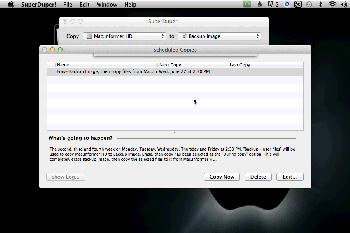


That’s in part because the corruption or other setting issues you’re having can result from missing or overwritten system files or configurations that aren’t copied back as part of a Time Machine migration. Available in a range of colours and styles for men, women, and everyone. Migration Assistant lets you migrate just some of your data. Shop high-quality unique Super Duper T-Shirts designed and sold by independent artists. (Solving corrupt app settings varies, but often involves tossing a file or several from ~Library/Preferences/ with the advice of the software’s maker.) With the except of specific applications having corrupted configuration files, a clean installation and a migration of settings generally seems to avoid causing identical problems in OS X. It’s a sensible and reasonable question: if some kind of corrupted or inaccurate setting is causing system problems, aren’t you just asking for trouble by bringing all your settings over? Likely no. How may I pull only selected data (such as images, and iTunes media like music and movies, and documents) rather than an entire profile? I fear that restoring an entire profile may also restore any problems that made me want to reinstall OS X.
SHIRT POCKET SUPERDUPER DOWNLOAD MAC OS X
When I reinstall Mac OS X (to solve performance problems, or clear space) I have a restore option to migrate data from my Time Capsule, but it currently only gives me options to migrate entire user profiles, applications, and settings. On the related suject of Time Machine, Larry Landen asks: As long as your drive isn’t mysteriously filling up, you’re good. I wouldn’t worry about it too much - let the system handle its files, and don’t be too concerned about the count.
SHIRT POCKET SUPERDUPER DOWNLOAD SOFTWARE
Most other backup software makes an initial copy of a file and then a “delta,” or a kind of summary of differences, for every version stored thereafter. Each hard link is counted by OS X as a separate file.ĭave notes that Time Machine also stores a sort of local backup on the startup drive to improve its performance in copying to a local drive or a remote one over the network. A Time Machine backup comprises mostly hard links pointing to existing files or folders unchanged since the previous backup. Using so-called hard links, which allows a single copy of data to appear multiple times in a folder hierarchy, Time Machine creates hidden folders that fully replicate a hard disk’s file structure. There are a lot of hidden folders on your drive, sometimes entire hierarchies that are emulating things that can’t be directly expressed in HFS+, but are still counted as “files,” even though you wouldn’t ever access them that way.Īpple implemented Time Machine in a very peculiar way by most developers’ reckoning to create an exact copy without duplicating every file. In general, especially if you’re not seeing excessive disk usage, this just isn’t something to worry about. The laptop I’m typing on right now has-according to Disk Utility-6,709,682 files. I remember those early days, back when laptops were made of plastic, and chips by IBM.


 0 kommentar(er)
0 kommentar(er)
